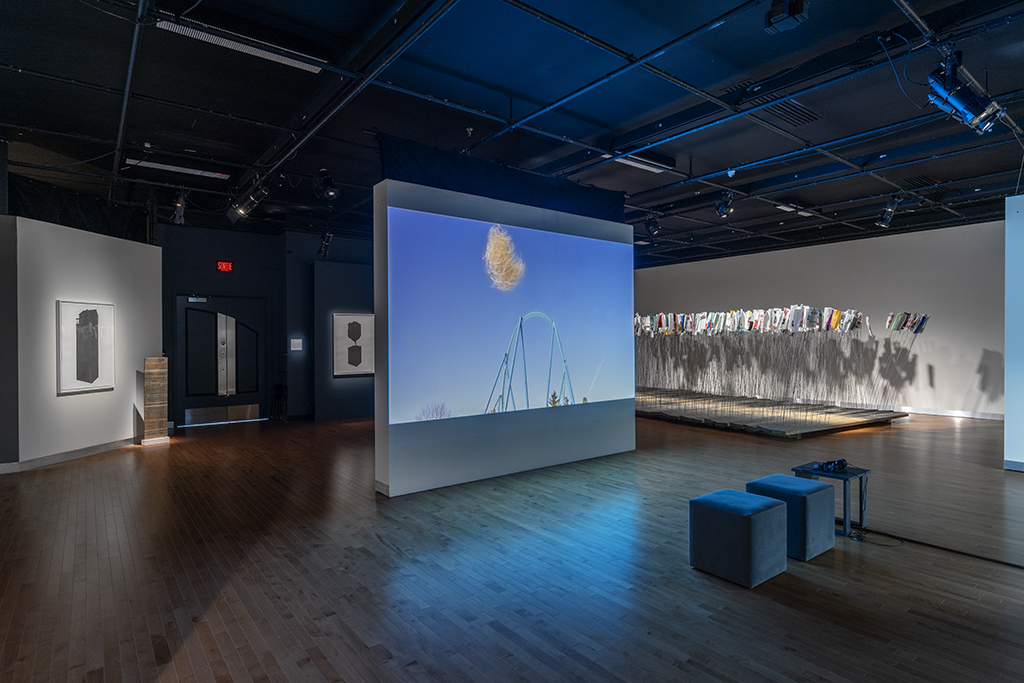The current edition of the Banlieue! Triennial looks at the presence of nature in North American suburbs, praised for their natural setting.
The exhibition at the Salle Alfred-Pellan of the Maison des arts de Laval, the installations at the Théâtre du bout de l’île, at Éco-nature, at the Centre de la nature, at the Centre LAVAL, and in Henri-Dunant, des Coccinelles and Chopin parks and the events that accompany them, approach the suburbs as a particular ecosystem, where humans are incorporated for better or for worse.
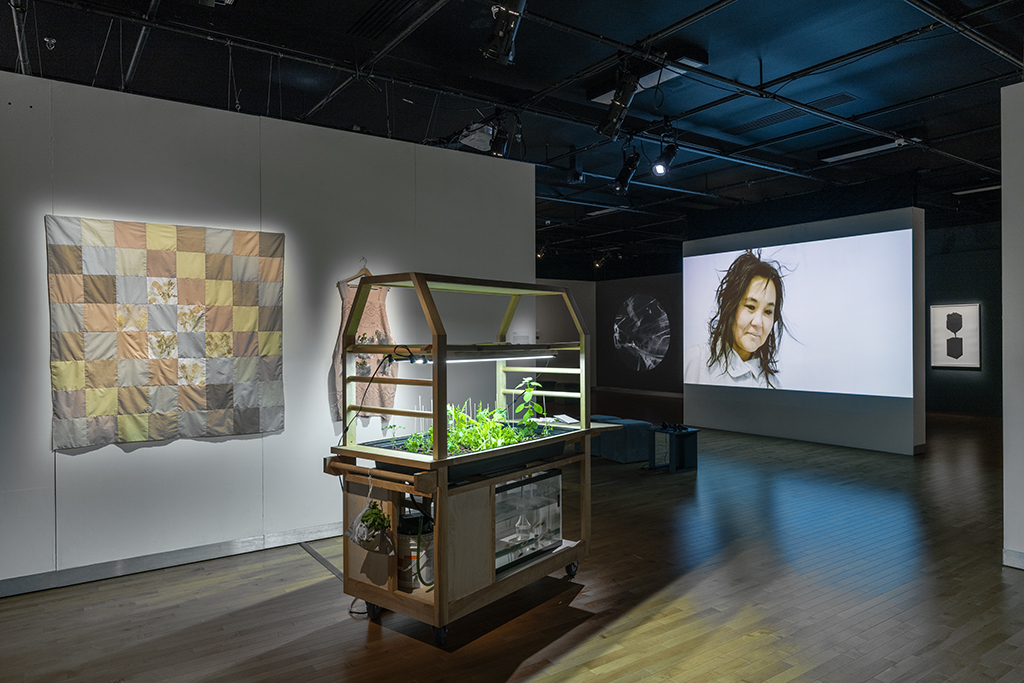
The artists presented engage in a careful observation of the various expressions of this encounter and draw up a “natural history” of it, through its evolution. On the other hand, the natural setting and the territory often remain apprehended according to their picturesque qualities. As a counterbalance, it seemed essential to me to try to bring together scientists who are interested in the ecology of humanized environments. This multidisciplinary approach breaks the habit of an interpretation in silo of the territory and the ecosystems and re-establishes links with the natural environments from which the human being can no longer abstain.
I dedicate this exhibition to my father, Guy Perrault, a specialist in the multi-millennial geological formations of Quebec.
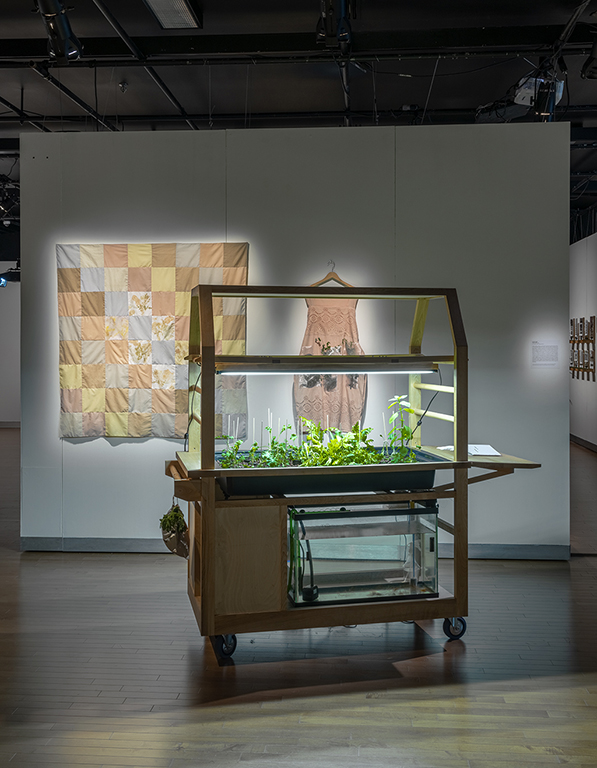
The Aqua-mobile consists of a mobile aquaponics laboratory used to support urban agriculture workshops. This technology, where bacteria, fish and plants work in symbiosis, allows to grow plants on a small scale. The device works on the same principles as filtering marshes, which are used for water purification and soil decontamination in certain public developments, as well as wetlands, on the scale of urban areas. In the framework of a partnership with the organization “Au Panier de Chomedey”, this portable module has contributed to develop the skills of citizens in planting seedlings and creating micro-gardens. It is essential today to reflect on the issues surrounding food and to put these questions at the center of citizen culture. A more playful aspect of the project proposed plant printing workshops using garden residues as well as an urban wild plant identification course to give more place to living things in everyday life. In the hall, a gardening apron, creations made from dyes and vegetable inks and photographs accompany the aquaponics module and testify to the experience of citizens during the workshops.
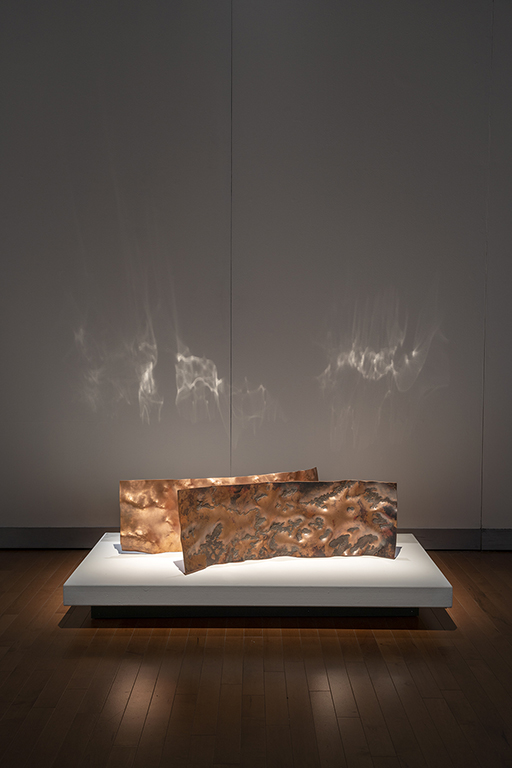
Copper is highly symbolic to the Anichinabe people, embodying the blood of the spirits and higher forces of the earth, and plays a fundamental role in the millennia-old exchanges between Aboriginal nations who still see themselves as custodians of the land. In Landing I & Landing II (Gwaabzang I & Gwaabzang II), the intricately handcrafted metal plates represent ancient geological formations, including the Canadian Shield and the Great Lakes and St. Lawrence basins, marked by the retreat of glaciers thousands of years ago. Michael Belmore reaffirms the pre-eminence of Aboriginal peoples in these territories, which today are home to many of Canada’s urban centres, including Montreal, Toronto, Quebec City and Trois-Rivières. The Montreal metropolitan area, bordering the St. Lawrence River, developed at a time when rivers were conceived as static. Today, management based on the concept of river freedom takes into account the fact that the course and flow of rivers evolve over time, that their beds can become incised, that sediments can be deposited on their banks, or that the banks can erode.

Afin d’éviter tous ces nœuds is reminiscent of a desire line, a pathway gradually traced by the erosion caused by the repeated passage of pedestrians or cyclists in urban and peri-urban wastelands or developments. At the top of the stems, the pieces of plastic bags suggest flowers, spikes of grass or herbaceous plants found in wastelands, i.e. those natural environments often despised yet hosting a great biodiversity.

In a playful way, Ludovic Boney recycles these remnants of unbridled consumption to build a natural landscape strongly marked by its proximity to humans, indirectly evoking public places littered with packaging waste that we unfortunately sometimes encounter. In addition to encouraging civic-mindedness and cleanliness, many Quebec municipalities regulate the use of plastic bags and containers. In addition, researchers are currently developing other materials that can offer an alternative to plastic, such as films made from starch or natural resins, or obtained by recovering shellfish scales. These products decompose naturally and, in the best of cases, constitute a contribution to natural cycles.
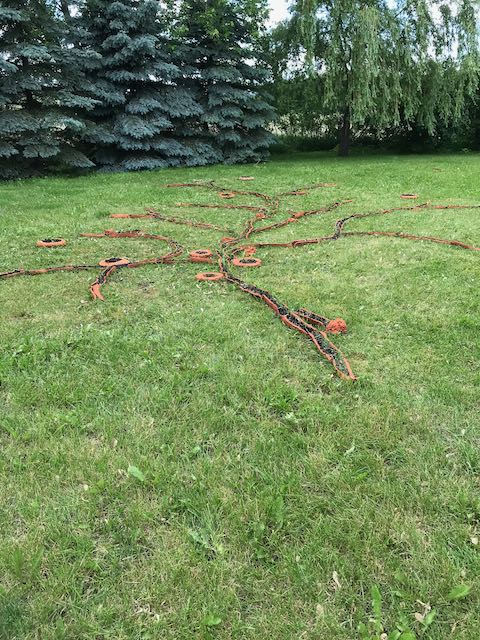
Since 2011, Marie Côté has been gathering clay in nature. She sources it in particular near Montreal, where she lives. These lowlands of the St. Lawrence constitute the main sedimentation basin of the Champlain Sea created 10,000 years ago. Here the artist is making a work from clay taken from Laval’s agricultural land, which accounts for 30% of the city’s territory. She worked in collaboration with Mr. Luc Forget, a dairy farmer in the Saint-François area, son of the late Yvon Forget. A descendant of seven generations of farmers established on Île Jésus, Yvon Forget fought all his life for the protection of agricultural land. Today, in his honor, his son Luc supplies Marie Côté with clay and seeds.

Marie Côté presents at the Salle Alfred-Pellan pieces of raw and fired clay, dried grass sheaves and seeds. The grey color of the raw clay and the luminous orange hue of the fired clay evoke the transformation of the material at the heart of her craft as a ceramist. Combining her gestures with those of her farmer partner, Marie Côté seeks to make the public aware of the unique qualities and richness of this nourishing earth.
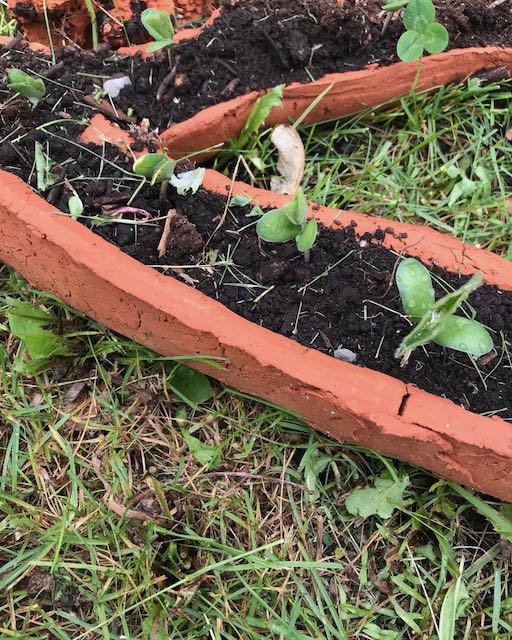
From this material, she also created an outdoor installation at the Théâtre du bout de l’île. She reproduces the hyphae of the mycelium formed by the symbiotic association between fungi and plant roots called mycorrhiza, a process that ensures important biological functions. Its forms are also used here as receptacles for the cultivation of clover, wheat, soybeans and corn, as on Mr. Luc Forget’s land located nearby.
In this work created for the Triennale Banlieue!, Marie-Suzanne Désilets groups, according to vegetation, photographs of two types of single-family homes from the series Nous-mêmes, produced during a research residency on Instagram at the Dazibao art center in 2019. In a new animation, freeze-frames insist on the prevalence of typical suburban planning patterns, while filmic fluidity expresses the everyday and living they struggle to make homogeneous. The suburban built environment is often established in a very uniform manner. In the Sainte-Rose district of Laval, or in the residential sector represented here, subdivisions have been created using a single housing model, sold in thousands and built repeatedly in only a few years. The landscaping on the front of the house consists of a simple carpet of grass, on which decorative trees and exotic plants, sometimes invasive, are planted. The two videos underline the tensions between conformism and originality that are expressed in this context, as well as the dynamic character of these landscapes, animated as much by human activity as by the vitality of the plants.
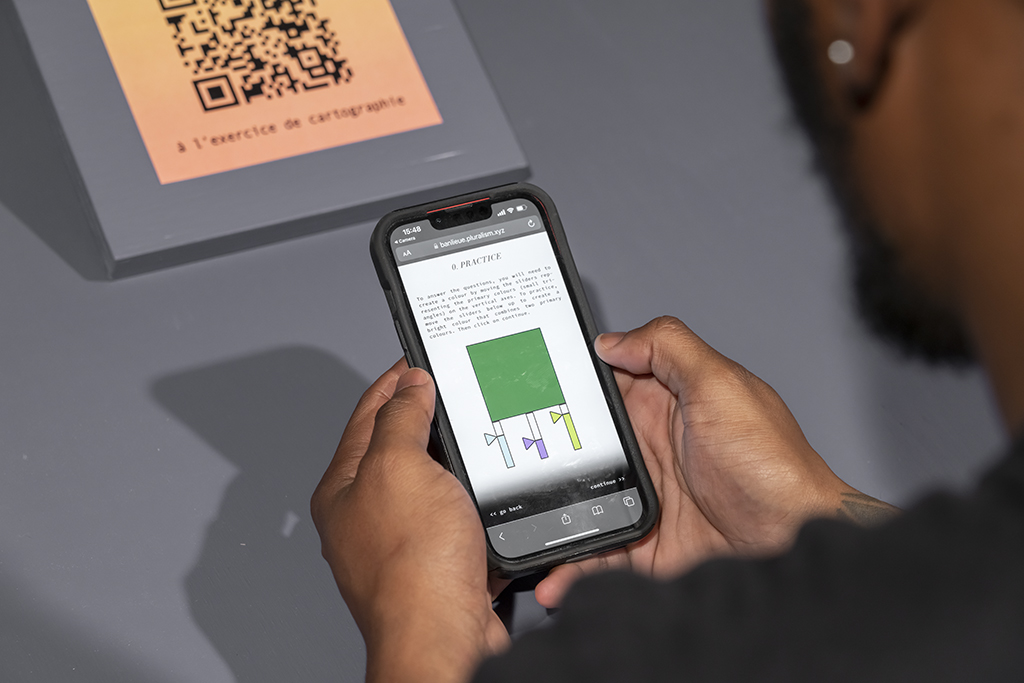
Presented throughout the Banlieue! Triennial at the Salle Alfred-Pellan of the Maison des arts, at Éco-Nature – Parc de la Rivière-des-Mille-Îles, at the Centre de la nature, at the Théâtre du bout de l’île and, on an occasional basis, in the Henri-Dunant, des Coccinelles and Chopin parks.
Nicolas Grenier creates works that make visible the questions that challenge us in the face of the transformation of the social order. While living in the suburbs of Los Angeles for his studies, he noticed that the transformations of nature in suburban areas attest to an economic, and even social and political ideology. For the Banlieue! triennial, he is conducting a field survey aimed at mapping the values, imaginaries and contradictions that underlie our perceptions of these collective issues related to a common future with respect to this environment. He therefore invites citizens and visitors to fill out a questionnaire, in which he asks them to indicate their personal position in relation to several subjective statements. Combining intuition and rigor, the exercise examines the relationships between individuals and the structure of the collective body. Using the methodology of opinion polls, Grenier examines the invisible forces at work and translates them into visual form. This enigmatic portrait of the imaginary of nature in the suburbs restores the intangible nature of time, social dynamics and moral dilemmas.
At the end of the presentation of Mapping Exercise: Suburbs, Nicolas Grenier presented the results of his survey, an integral part of his work, which are still available for consultation on a dedicated microsite : https://banlieue.pluralism.xyz/results.
The artist thanks Nicolas Epstein for the realization of the Web interface.
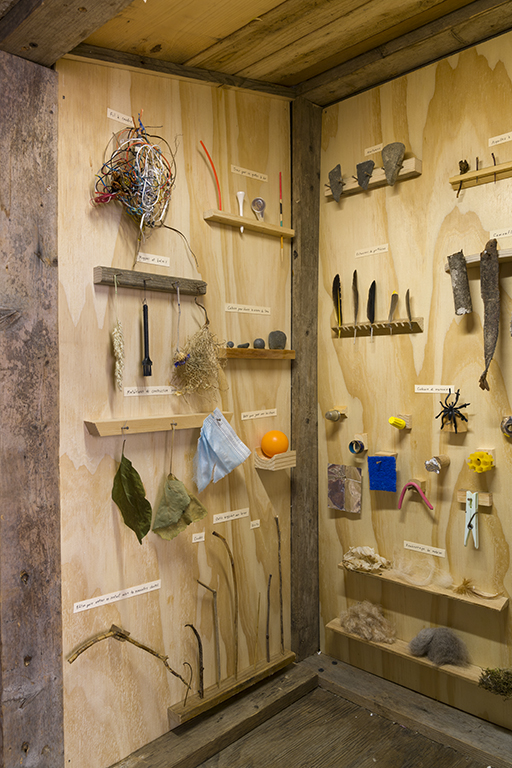
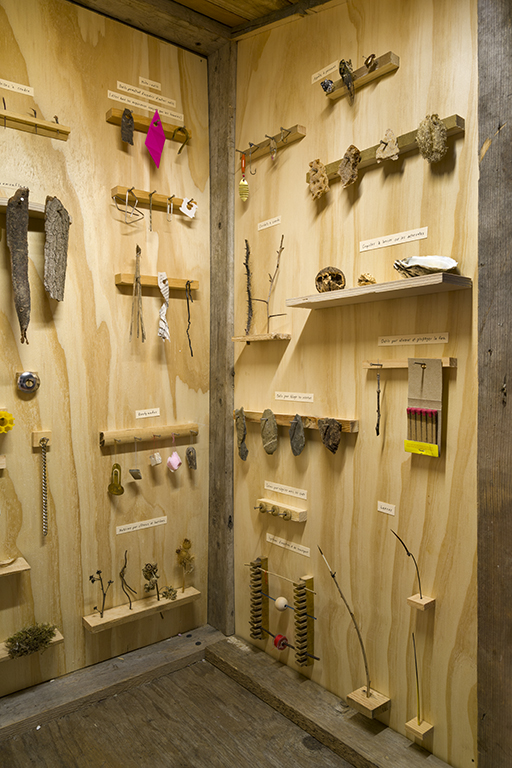
Reminiscent of garden sheds found in the suburbs, Community Tool Library for Birds contains a variety of accessories, some borrowed from humans, that birds use and share, as evidenced by recent observations. Western thinkers have long believed that humans are the only ones who use tools. It is now known that this practice is common among animals, especially primates and birds. In a playful way, Ibghy and Lemmens’ work presents a whimsical example of both human and bird behavior. The reference to the library also refers to the notion of culture, blurring the opposition between nature and culture that has long been at the heart of the definition of the living in Western thought. Moreover, in its very organization, this library borrows from human behavior, notably by imitating the organization of a garden shed or a collective DIY workshop, which raises the question of exchanges between animals and humans in the same territory. Several species of birds live in cities or suburbs. In this proximity, birds steal small objects from humans, and even imitate them, for example by reproducing the sounds of their activities in the case of mocking birds

In the context where shopping malls are part of the collective imagination when one thinks of North American suburbs, Catherine Lescarbeau proposes an unusual work taking shape from an element temporarily removed from the Centre Laval, one of the city’s major shopping centers. She focuses on a plant box as an architectural partition and decorative element and moves it from the shopping malls to the Salle Alfred-Pellan. In collaboration with botanist François Lambert, she then established a rigorous botanical inventory of the entirely artificial exotic plants contained in this planter, underlining the strange character of this “green” décor.
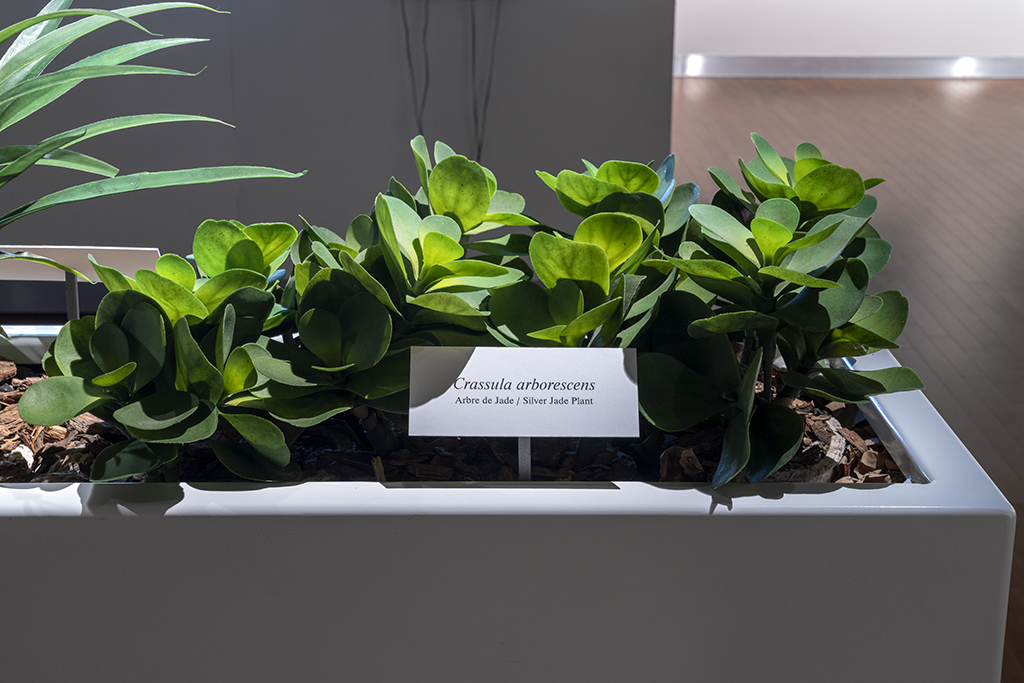
At the Centre Laval, photographs of this module are displayed in the exact location it once occupied; at Salle Alfred-Pellan, it is presented as a work of art and serves as a division in the exhibition space. Since its first expression in 1956, with architect Victor Gruen’s Southdale Center on the outskirts of Minneapolis, Minnesota, the shopping mall has developed into a huge building surrounded by a sea of asphalt, grouping together a large number of stores sheltered from the elements. This type of commercial development reflects a lifestyle confined to the interior, losing its bearings in the face of nature, a reality that is evident in this work by Catherine Lescarbeau.

For the Triennial, Deborah Margo invests the neglected grassy space at the edge of the Collège Montmorency parking lot and the access roads to the Maison des arts. Currently, the site has dandelions, thistles, clovers and crabgrass. Margo will diversify the flora with seeds collected from wastelands near her home and plants collected from wastelands in Laval, or collected in their gardens by citizens. Species such as echinacea (pink), rudbeckia, wild daisies, feverfew, asters (purple and white), goldenrod and tansy grow in profusion in domestic gardens, so that plants of these are often removed and thrown away in the maintenance of beds. With these contributions, the care that the artist brings to this abandoned land favors the proliferation of species and the biodiversity of the site. This installation-garden thus pays tribute to the resilience of the sometimes neglected nature of our immediate environment.
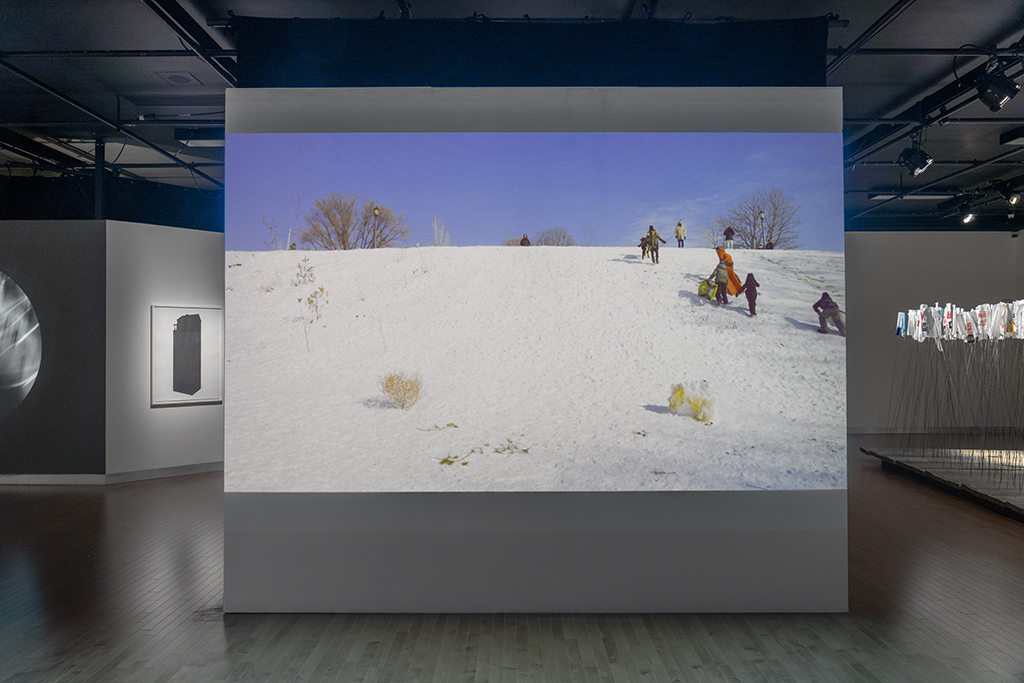
Louise Noguchi’s video Searchers features twirling weeds reminiscent of western films, in a winter landscape of the suburbs of Markham and Vaughan near Toronto. Following the random peregrinations of these wild grasses offers a privileged perspective on the specific situation of the suburbs, its forms of housing, its transportation networks, its activity centers, etc. The urban encroachment on natural spaces, the loss of biodiversity, the establishment of a low-rise built environment, and the multiplicity of human activities that take place there are all revealed indirectly. The reference to westerns also associates the imaginary of a world considered virgin ready to conquer the one that is at the source of urban sprawl, in a colonial logic, without regard to indigenous ancestral rights or to the history of rural and village occupation of the place. The virevoltant represents in a way this uprooting, but also the search for a welcoming territory, the other pole of a dynamic that marks the development of the suburbs today. From a botanical point of view, it also evokes the mobility of weeds found in the suburbs, often disseminated by roads and highways. Common reed or phragmites, buckthorn and Japanese knotweed remain the most common.
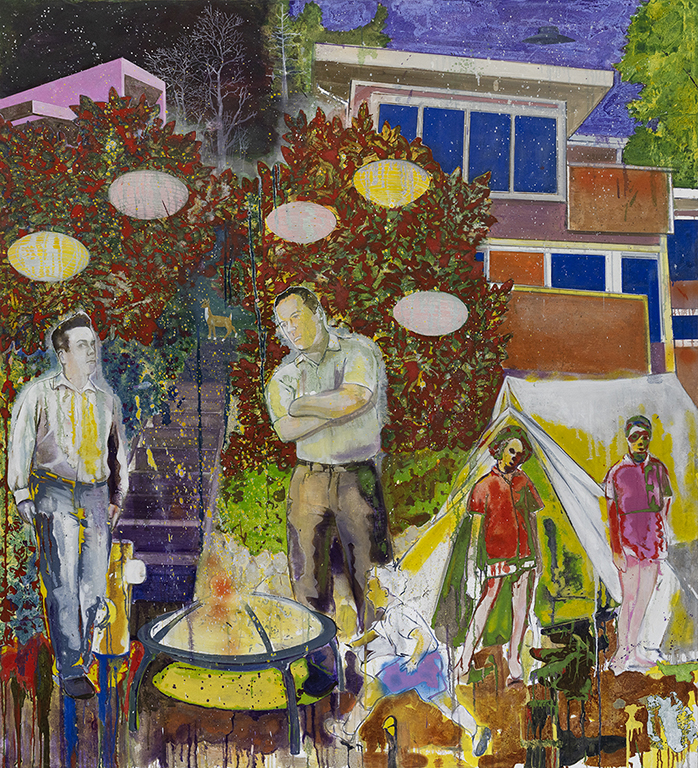
In the paintings of the Suburban Stories series, Steven Orner depicts outdoor activities associated with suburban life, such as barbecuing in the backyard, playing in the backyard, swimming in the pool, or tending to a flowerbed. In this way, he explores, in the form of painted collages, the imaginary of this buffer zone between city and country. From photographs and sketches taken on the spot, Orner builds up a bank of images that serve as a framework for the daily life illustrated in his paintings. Most of the houses and landscapes were inspired by real places in Laval. In a figurative style, relying also on a vocabulary of outdated images from popular culture, taken from advertisements among others, he stages the prevalence of the dream of a perfect life close to nature associated with the suburbs, in the very places where this ideal is embodied. The model of the single-family home with its private yard is still highly valued and the suburbs remain the most sought-after living environment for Quebecers. By juxtaposing fragmentary and often contradictory images, he confronts this idyllic relationship to the territory, to the consumerist way of life, to the atomized sociability, to the artificialization by humans of natural environments.
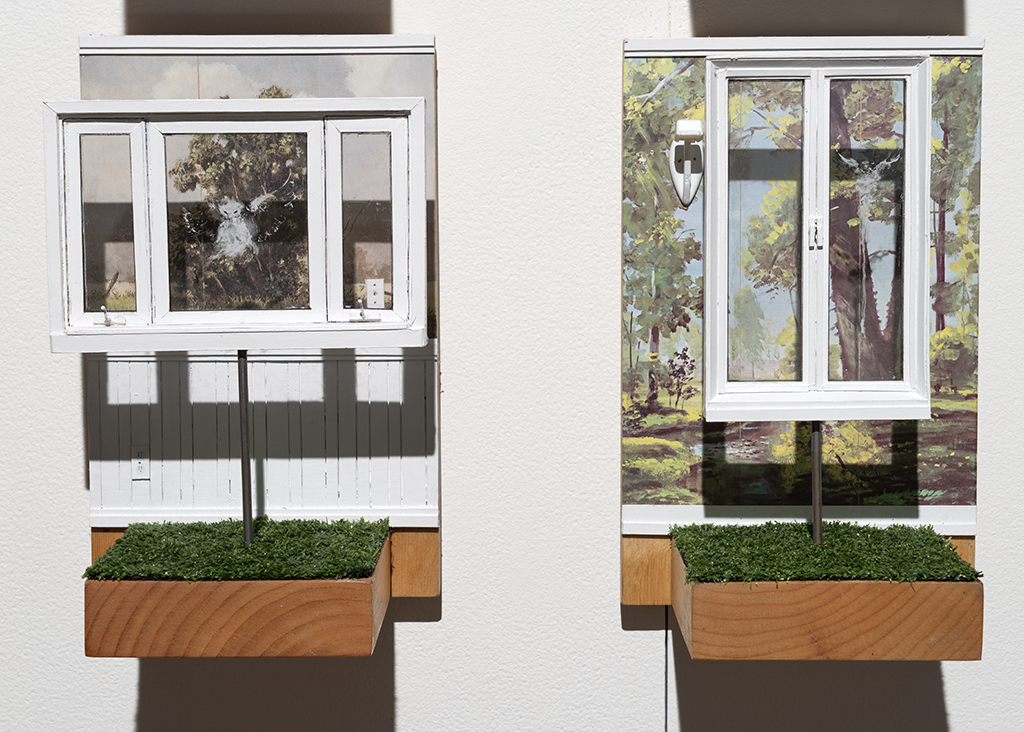
In the Ghost Birds series, Graeme Patterson contrasts the imprint of birds that have flown into windows with domestic interiors that cultivate a picturesque relationship to nature. Each of the works shows a different landscape through a window in the foreground. At first glance, the artist invites us to contemplate nature from inside a house. However, details visible in these landscapes, such as light switches, electrical outlets or mouldings, reverse this perspective and reveal that the gaze, which was thought to be turned towards the outside, is instead directed towards the inside of these spaces, which are quite ordinary. With this reversal of perspective, Patterson emphasizes the very cultural relationship to nature and its disconnected distance from reality as opposed to a fusion with it, as evidenced in particular by indigenous mythologies. In the foreground, the silhouette of the birds that hit the windows in flight literally confronts the unexpected emergence of human habitation in natural environments. Through this detail, one feels a certain unease in adopting the point of view of the birds for whom the built environment constitutes a major obstacle, often lethal.
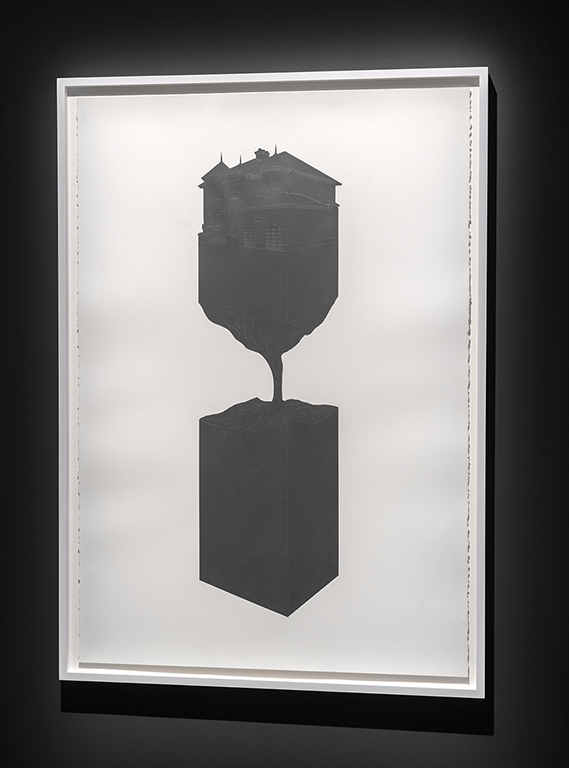
Boris Pintado questions the model of land grabbing, knowing no borders and encompassing the entire planet, from its surface to its depths, and even beyond. By evoking a geological section, described by a meticulous work of engraving, smearing and hiding with graphite, his works establish a comparison between the history of human activity and the strata of the past going back to the origins of the Earth. In this perspective, the suburban dwellings seem derisory, and the title of Landlord, literally “lord of the land”, presumptuous as to the ownership of the Earth. They attest to the fact that human activity and the built environment are part of the surface of an Earth marked by a long evolution, far beyond that of human history. However, even in the distant past, this past recurs, as shown in particular by the presence of sensitive clays inherited from the Champlain Sea in the lowlands of the St. Lawrence Plain. Most of Quebec’s metropolitan areas are located on this territory. These remnants of a long-gone past are now causing landslide risks, particularly in some areas of the northern ring of Montreal.
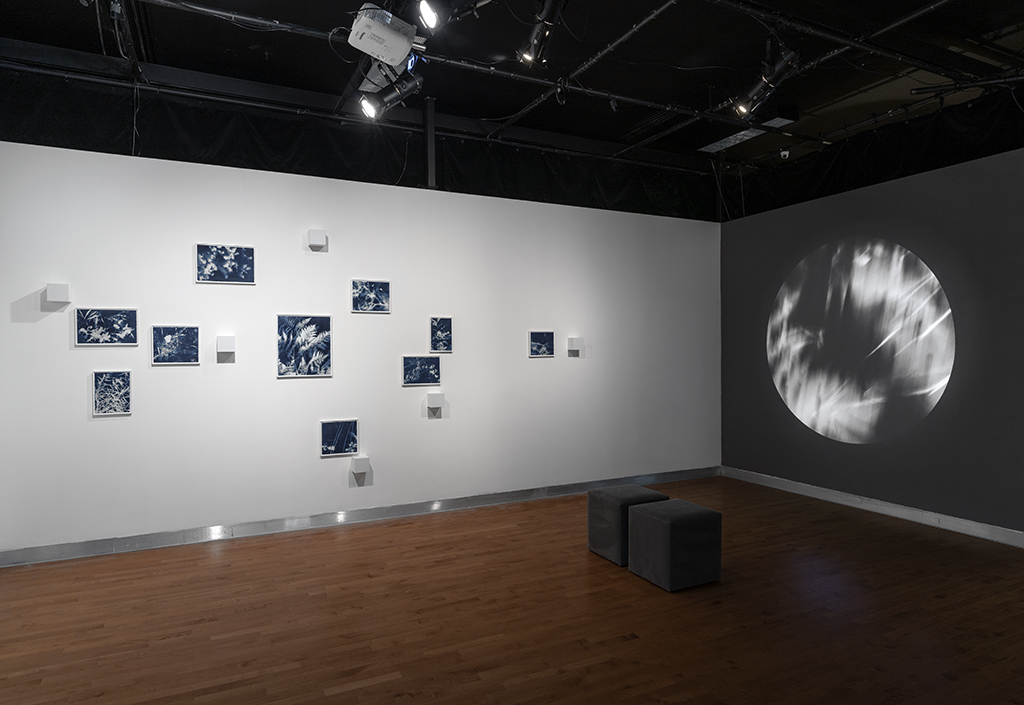
In a fieldwork inspired by botanical and bioacoustic methods, Ariane Plante examines selected natural environments and the intangible qualities that link them to humans. As part of the Triennial, she conducted fieldwork in the Sainte-Marie Woods, a wetland in Laval. Using an ancient photographic process called “cyanotype”, she captures a visual imprint of botanical specimens from this territory. At the same time, a collection of recordings made at various times of the day and seasons documents the sound texture. Using a set of digital instruments, Ariane Plante combines the analog images thus obtained with the sound recordings made on site, in order to recreate a feeling of immersion in this environment and to channel our attention to the dynamics that characterize it. The round video projection invites the viewer to get lost in the intertwining of botanical imprints that the digital sound system generates, while the sound composition closely links the sounds of human activities to those of animals and the atmospheric conditions of the territory. The ensemble proposes new sensory, mnemonic and affective experiences, where sounds and images merge or stand out depending on the level of attention of the listener.
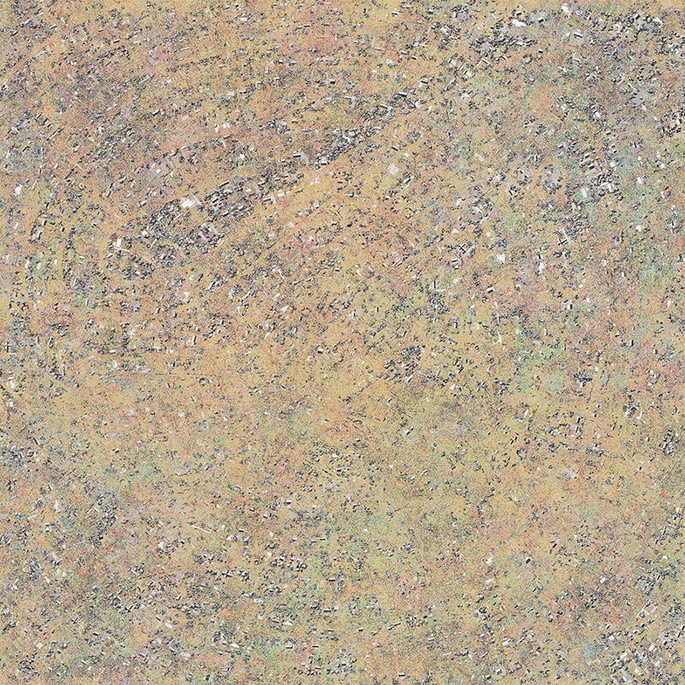
In this series, Ross Racine composes aerial views of fictional suburbs and plans for residential developments highlighting the role of the computer as a tool for urban planning. His compositions, drawn and reworked freehand with a graphic tablet, do not include photographs or digitized images. Focusing on the relationship between the organization of the territory and the lived experience on the ground, they reflect on the apparent rationality of urban planning and design, while exposing the contradictions and conflicts that lie beneath its surface. The evolution of technological tools has facilitated the rapid design and planning of residential and commercial areas, often implemented and built by developers within months. While abstract, this urban design encourages a rapid increase in urban sprawl, with its layouts based on the fluidity of motorized travel and disconnected from the human scale. As Ross Racine playfully illustrates, these urbanistic developments visible from the air remain imperceptible, and sometimes even anxiety-provoking, for citizens. In the suburbs, large housing developments are thus created in ignorance of the reality of the land and its natural cycles, as well as of the humans and living things that cohabit there.
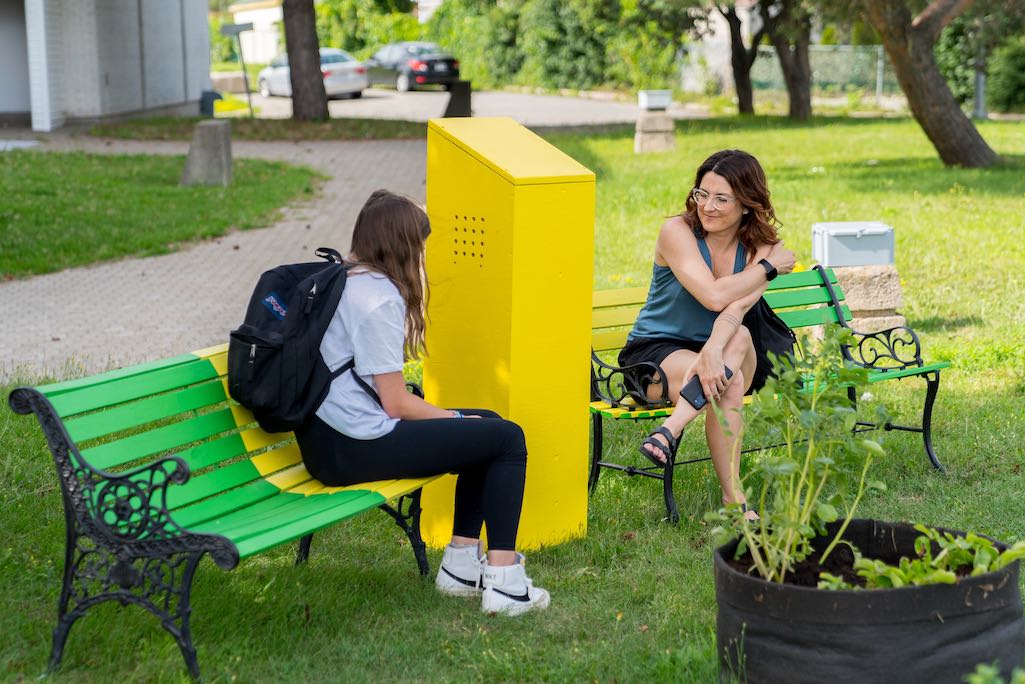
In this evolving work, Reznik turns her attention to issues of roots and the traditions associated with the cultivation of the potato, a companion plant species to humans as a subsistence food. Around potato plants placed in geotextile trays, listening stations broadcast childhood memories and individual or family stories of Laval residents, linked to experiences of uprooting and acclimatization. The potato has an important place in the culture and economy of the artist’s native country, Ukraine, which is the third largest consumer of this tuber in the world. Today, Eugenia Reznik makes this crop a rallying point around roots and human uprooting, all the more sensitive to this traumatic experience in the current context. Growing potatoes is a way to evoke our roots, our traditions, and to pass them on to the next generation.
The first iteration of this work received financial support from the city of Longueuil.
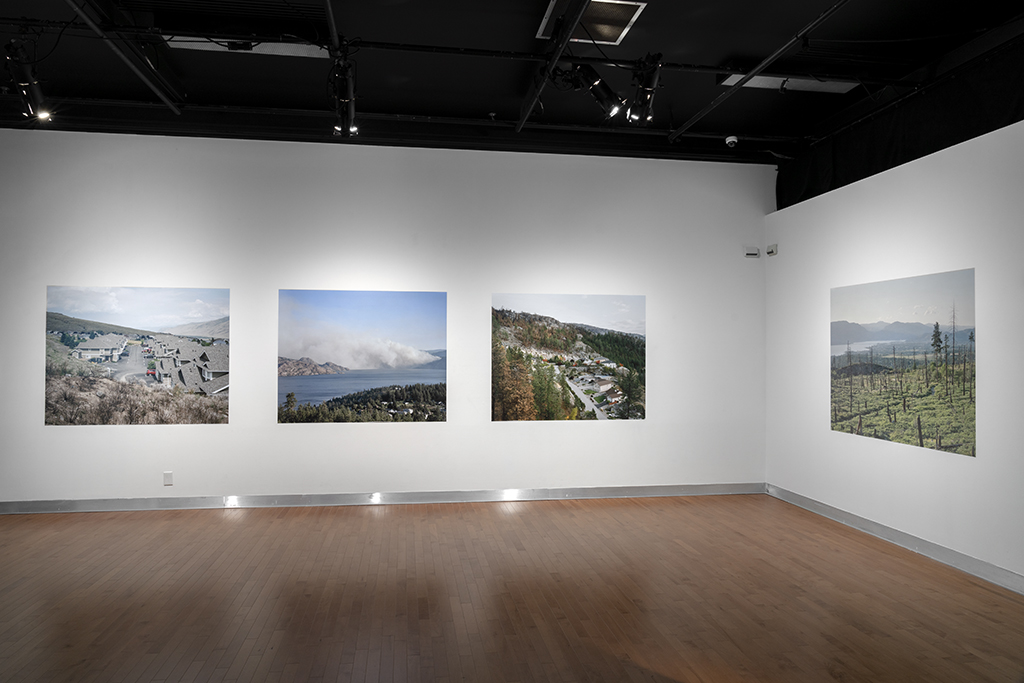
In a documentary photographic approach, made in collaboration with scientists, Andreas Rutkauskas examines the landscapes on the outskirts of cities in the interior of British Columbia marked by the incidence of forest fires. Using a 4″ x 5″ camera, he shoots on film, scans it and prints it in large format, which gives a very accurate representation of many details. He thus makes a meticulous examination of this territory where the fight against forest fires and prevention operations rub shoulders with the traces of devastation and the signs of regeneration caused by these infernos.
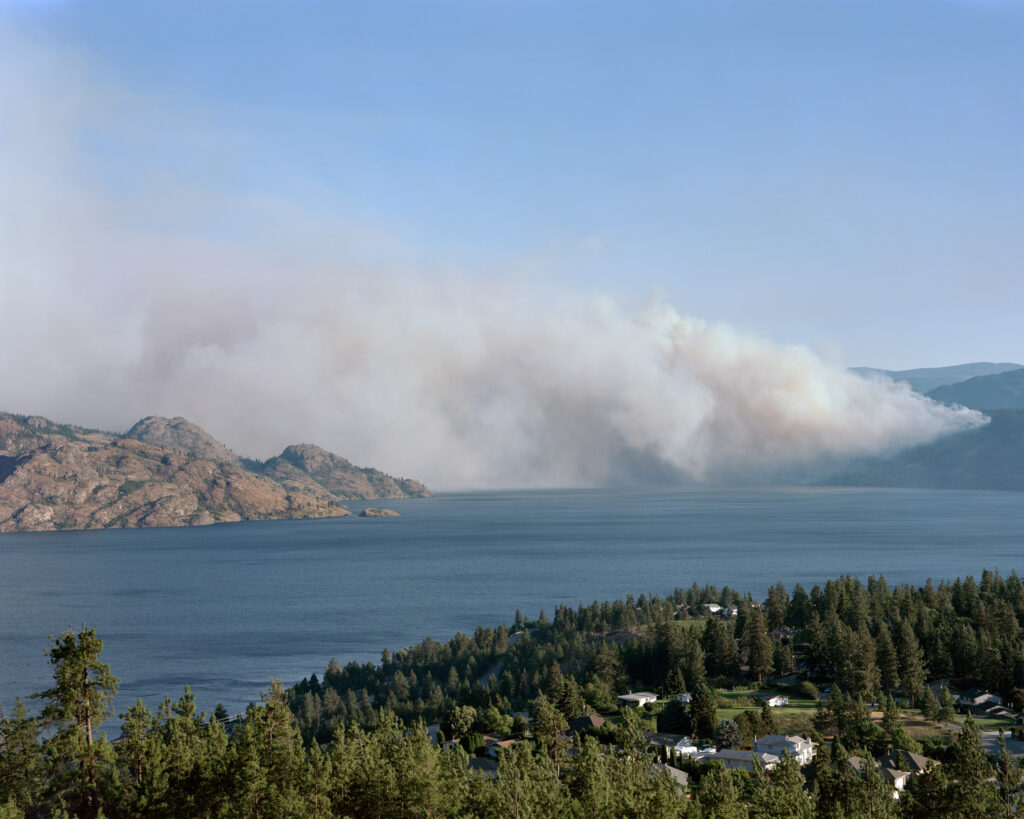
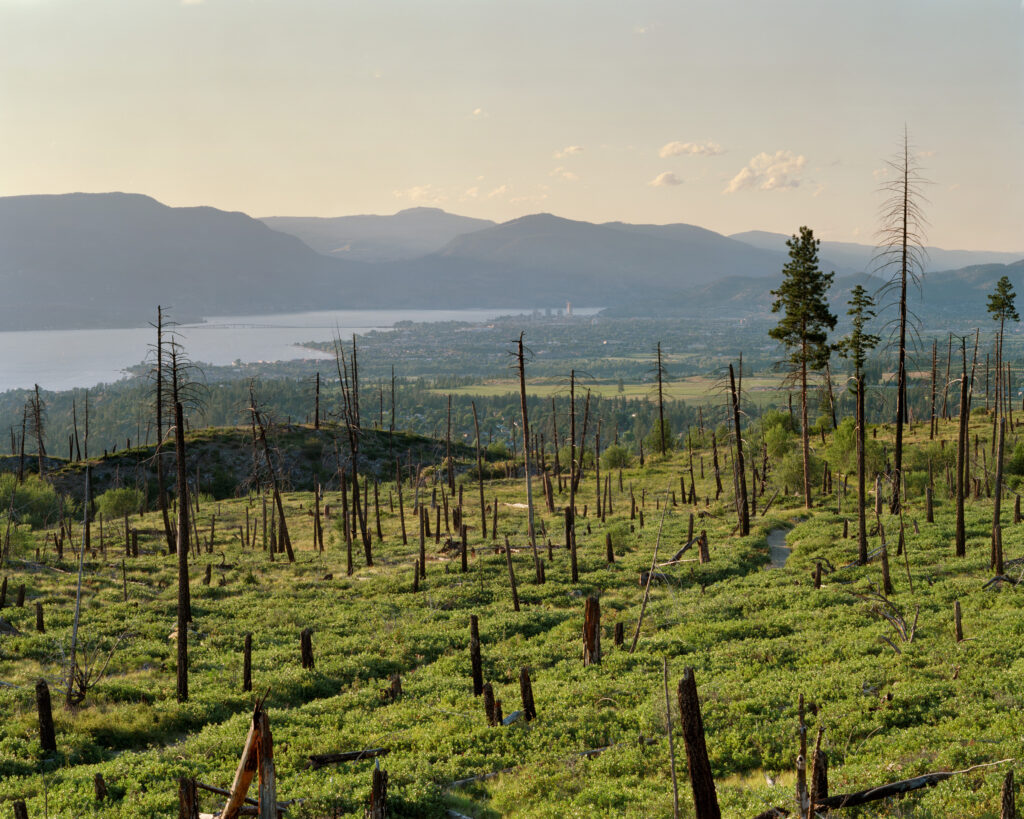
In our selection, a 2017 photograph entitled Mount Eneas Wildfire, Remnants of the 2003 Okanagan Mountain Fire (left), shows an active fire and the aftermath of a devastating 2003 fire, while another shot dated 2020, Regeneration of the 2003 Okanagan Mountain Park Fire attests to the regeneration of the same territory a few years later. Andreas Rutkauskas analyzes the situation on the ground with a certain hindsight and underlines the need to rethink the cohabitation with fire. His reflections can serve as an example for reconsidering the management of flood risks in suburban and urban areas of Eastern Canada.
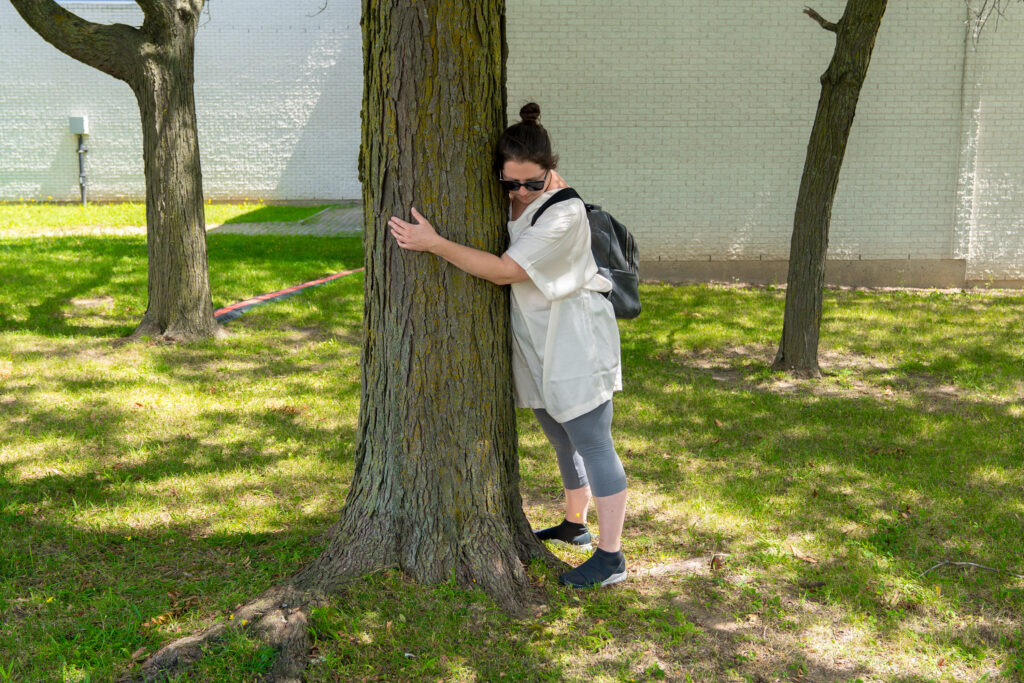
Presented throughout the Banlieue! Triennial at the Maison des arts de Laval, Éco-Nature – Parc de la Rivière-des-Mille-Îles, the Centre de la nature, the Théâtre du bout de l’île and, on an occasional basis, at Henri-Dunant, des Coccinelles and Chopin parks.
The work Pulsations consists of a sound installation in the heart of a tree. The spectators can hear and feel it physically by hugging the trunk or by sticking their ears to it. The whole body of the tree then transmits a vibratory sound reminiscent of the heartbeat that can only be heard and felt in close proximity. The constant muffled rhythm transmits a sensitive, organic and soothing experience, a microcosm echoing the proven benefits to human health of walking in the forest or the presence of urban woodlands. In addition to this undeniable contribution for individuals, the presence of trees constitutes an ecosystemic wealth for the whole community. It reduces runoff and soil erosion during heavy rains; provides a significant supply of oxygen; filters dust and suspended particles; casts a refreshing shadow; and provides a living environment that is favourable to biodiversity. However, urban forests and their canopies face a number of threats, including limited distribution and number of trees; inappropriate species selection in different contexts; disease and insect pests; damage to their growth; climate change; and the mineralization of the urban environment.
Produced as part of a call for projects from the Centre d’archives de Laval launched in 2018, this short film by Lisa Sfriso revisits the history of the banks of the Mille-Îles River at a time when the river and its shores were a popular vacation spot.
The filmmaker used unpublished documents from the Thousand Islands Yacht Club’s archives, including short films related to the parades that took place on the Thousand Islands River every summer from 1945 to 1960. These archives, filmed on 16 mm film, allowed him to bring back to life this flamboyant era, marked by a certain carelessness regarding the quality, accessibility and durability of these natural sites.
In front of the camera, the stories of brothers Jacques and Pierre Laplante introduce us to their father, Lionel Laplante, co-founder of the Thousand Islands Yacht Club. To their stories are added the memories of Claude Latour, the son of Jean-Paul Latour, secretary of the Club, and of Louis H. Bélanger, a summer resident of Sainte-Rose who was marked by the annual parades of the Yacht Club. Supported by archival images, they recount the work done to dig and widen the river, undertaken at the time by the Club, and tell of the steps taken with elected officials to have their project accepted. Between 1947 and 1954, the Club nautique des Mille-Îles obtained subsidies to dig the river and thus improve its navigability, creating a course of nearly twenty kilometers for water sports enthusiasts.
In the current context, the images of bathers in the Thousand Islands River and the ease of access to this body of water are surprising. The surprise, given the situation that prevails today, prompts reflection on the current state of the banks, their accessibility, their sustainability and the health of this ecosystem.

